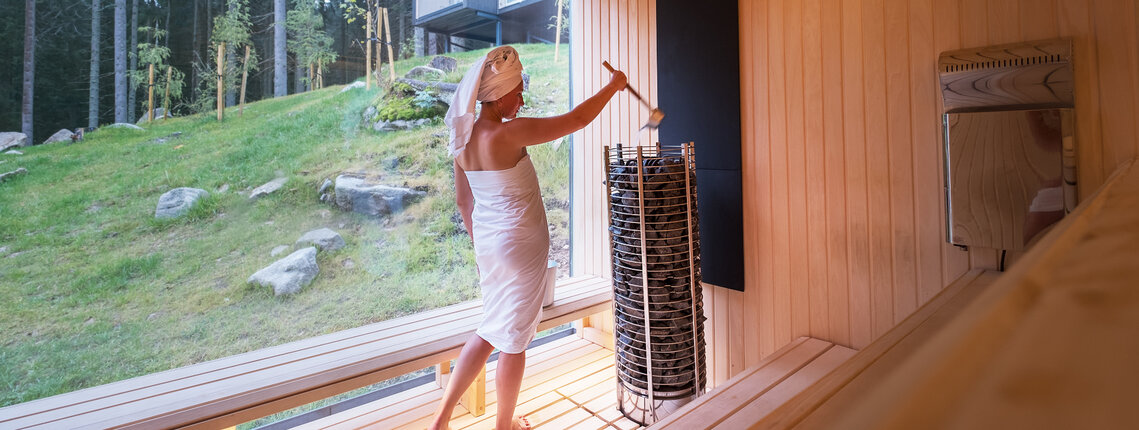How to care for an outdoor sauna?
Have you invested in a new outdoor sauna and don't know how to take care of it? Believe me, it's not a science. She will care about you more than you care about her.

Here are some of the most frequently asked questions and answers about outdoor sauna care and maintenance:
1. Is it necessary to always clean the sauna after each sauna session?
A properly built sauna should be well ventilated. This is important not only for a good sauna experience, but also for removing moisture and keeping the sauna dry. Try this method - after sauna, heat the sauna for another half hour. The next morning, open the door and let the sauna ventilate (breathe) until the next sauna procedure.
2. How to get sweat stains out of the sauna?
Sweat stains mainly occur on the walls of saunas, but they usually only occur when the sauna is too cold for the moisture to evaporate from the wood. Prolonged moisture on wood paneling creates stains.
The method described above is often all you need to remove sweat stains from a sauna, as wood dries quickly and naturally. The ideal choice is also the use of free-standing backrests, or fixed backrests on the wall. Such "tricks" keep the wall dry from sweat.
3. How to disinfect a wooden sauna?
Another advantage of the method described above is that you do not need any disinfectant. Studies have shown that bacteria and viruses cannot live at temperatures above 60°C. Therefore, chemicals and disinfectants are not needed to keep the sauna germ-free.
4. Are saunas difficult to maintain?
No, unlike, for example, whirlpools, they are not. Saunas do not require chemicals or complicated cleaning products and procedures.
5. How much does sauna maintenance cost?
Determine the size of the sauna. Think about how you plan to use it. Will it be a "party headquarters" or a place for solo relaxation? Choose a type of sauna that has space for the number of people you count on, so you don't waste money and energy on heating unused space. You should also avoid making the ceiling unnecessarily high, so that the heat rises above the level where the "sauna users" are sitting - about 210 cm is usually considered the maximum.
6. Is the sauna wood treated?
If we are talking about the internal wooden paneling of the sauna - simple answer - no, do not treat it. Natural is best. The wooden floor of the sauna dries naturally and does not need oils or other chemical preparations for treatment. To protect the wood in the sauna, its natural drying is sufficient. If you treat the wood with chemicals, you will only make trouble - chemicals will get into your sauna environment. In the worst case, your previously clean sauna will look like a paint factory. And you definitely don't want that! So it's best to let the hot sauna room breathe naturally. Enjoy the natural and perfect composition and properties of wood.
7. How can outdoor saunas be protected from extreme weather?
The outside of your sauna is a completely different matter when it comes to wood treatment. Depending on the type of wood, a good stain every few years may be all you need to maintain the longevity of your sauna exterior. A good wood stain will also help keep your sauna looking fresh. A well-built sauna can last for decades. To keep the sauna in top condition, it is ideal to follow the motto "less is more". Less chemicals, but more natural methods to keep your oasis of relaxation dry, germ-free and protected from extreme weather.



